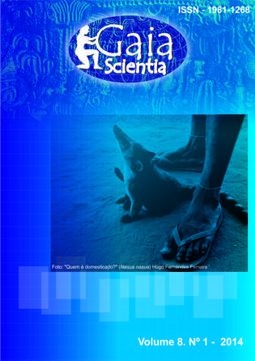Status of caatinga vegetation after implantation of integration works of the São Francisco river with northeastern northern watershed
Abstract
The objective of this study was to analyze the actual state of the works of PISF, about the changes suffered by the vegetation of the Caatinga. Five random transects were plotted alongside the canal, and within these 10 plots of 10m x 20m were marked. The survey resulted in 3685 individuals of which 2288 were regenerating and 1397 adults, belonging to 32 species, 30 genera and 15 families. According to Jaccard similarity, two groups were formed, the first with individuals located at a distance of 0-100m in relation to the channel, represented mostly by regenerating individuals, and the other in 100-225m, represented mostly by adults. It was observed in the latter a considerable increase relative to the average number of species and individuals, demonstrating that the works of PISF are causing a reduction of phytodiversity, favoring the formation of vacant niches and establishment of exotic species.Downloads
Download data is not yet available.
Downloads
Published
2014-01-27
How to Cite
SOUZA, A. dos S.; DE LUCENA, R. F. P.; DE ALBUQUERQUE, M. B.; FABRICANTE, J. R. Status of caatinga vegetation after implantation of integration works of the São Francisco river with northeastern northern watershed. Gaia Scientia, [S. l.], v. 8, n. 1, 2014. Disponível em: https://periodicos.ufpb.br/ojs/index.php/gaia/article/view/17928. Acesso em: 15 apr. 2025.
Issue
Section
Ciências Ambientais










